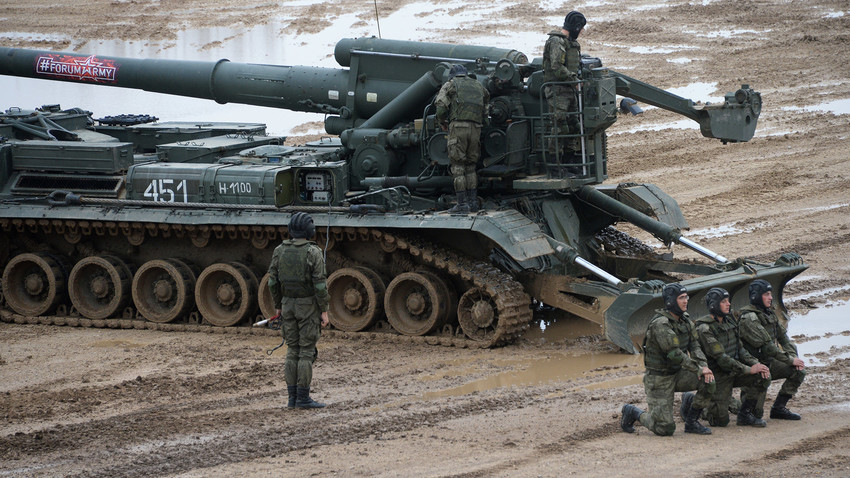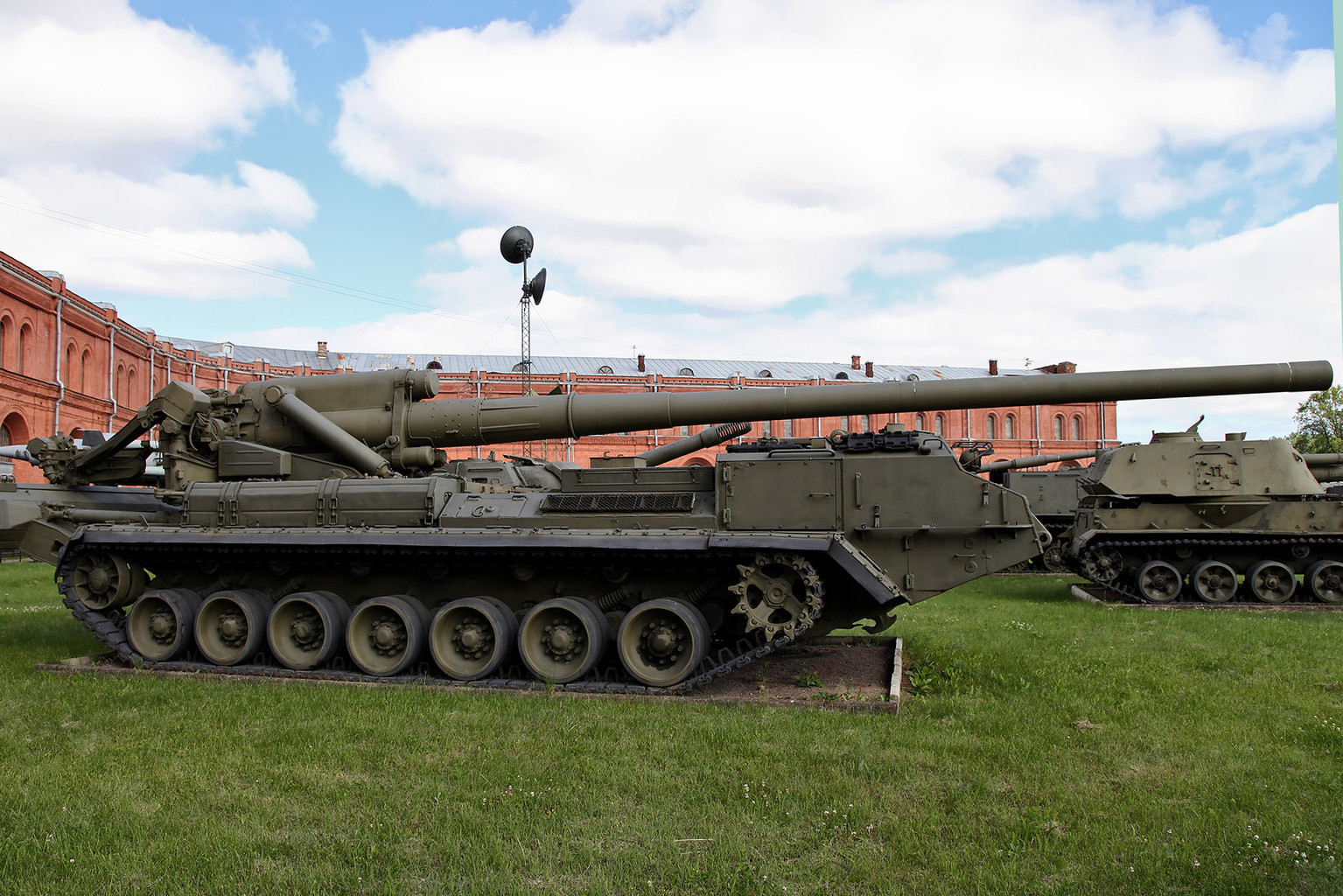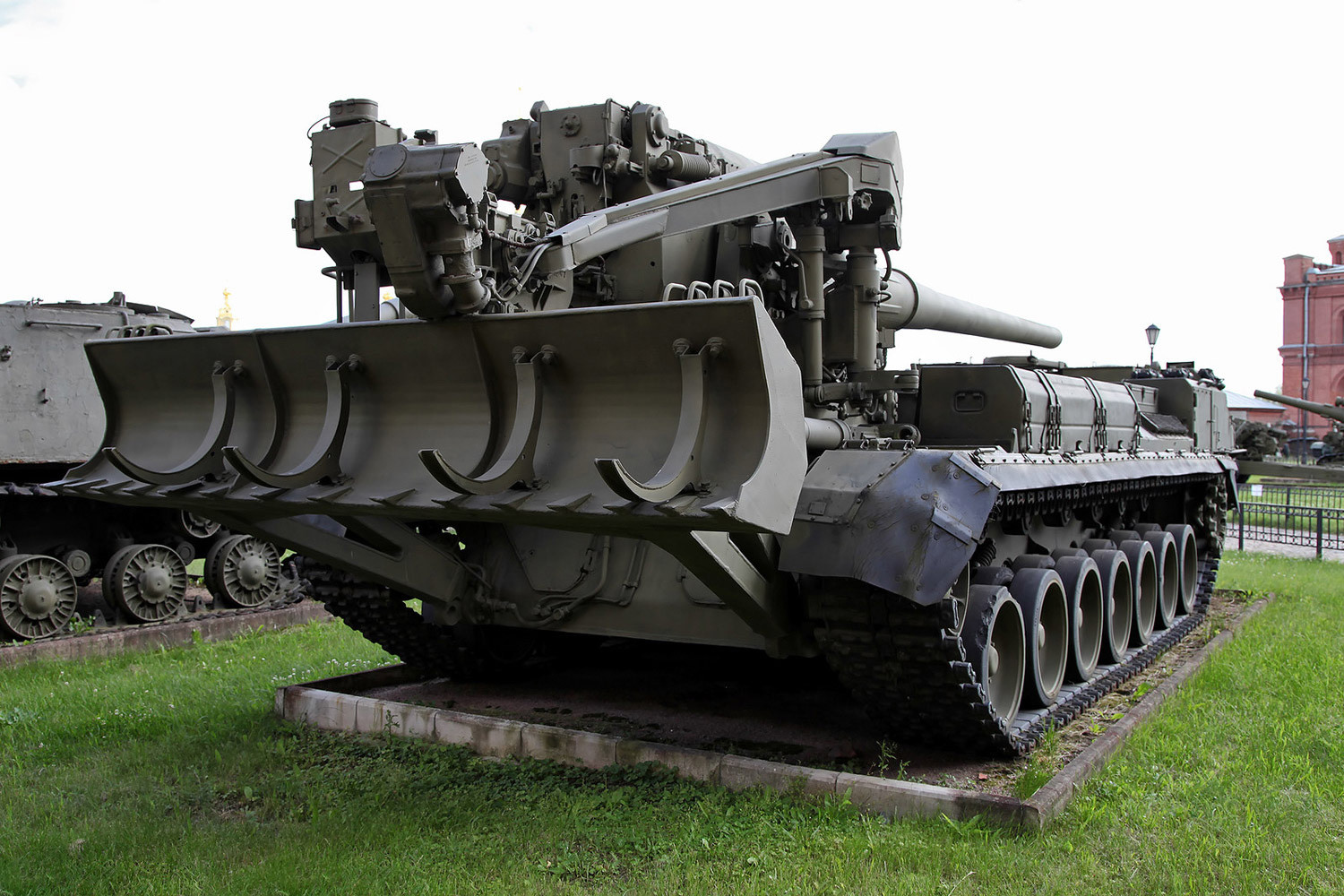Top Gun: Check out these devastating Russian artillery systems

Servicemen are at the 2S7 "Pion" (S7M "Malka") 203 mm self-propelled cannon during the Polite People show as part of Third International Military-Technical Forum Army 2017 held in the Moscow Region.
Kirill Kallinikov/SputnikDuring the Cold War, both Moscow and Washington worked on developing artillery systems that could fire tactical nuclear shells on the battlefield. Russian manufacturers managed to create such a system.
The first was the 2S7 Pion self-propelled artillery gun. It could carry up to four 203 mm nuclear shells that could eliminate targets at a range of 37.5 km.
“After the first successful nuclear tests, scientists started working on applying these technologies to all possible weapon systems - even in land mines and tank shells. Yet the tests proved that these types of projectiles were not as effective as radioactive clouds that spread over battlefields for kilometers, affecting everything in their paths, friend or foe,” Alexei Ramm, military analyst from the Izvestia newspaper, told Russia Beyond.
As he mentioned, these tests proved the tactical nuclear weapons to be ineffective in potential conflicts, and the Pion artillery system received conventional 203 mm projectiles, instead of mass destruction ones.
However, the shells still made the artillery system one of the most powerful in the 20th century.
What replaced the nuclear shells?
Each Pion, and its latter version named Malka - that could destroy enemies 50 km away - are now charged with conventional 203 mm shells.
These projectiles weigh more than 100 kg - they’re composed of pure steel charged with different types of explosives. This devastating weapon can eliminate a whole outpost of terrorists hidden deep in the mountains.
“In the coming years Malka systems will receive new types of corrective munition with laser navigation systems. This innovation will drastically increase their accuracy and will make them even deadlier,” said Viktor Murahovsky, editor-in-chief of Homeland Arsenal magazine.
As he mentioned, the new shells’ deviation will be no more than five to seven meters from their target, which is pretty impressive for artillery systems aiming at targets dozens of kilometres away.
“Today Russian generals are considering integrating Malka systems with drones. During recent battle tests they successfully proved their ability to work alongside Orlan-10 UAVs and I won’t be surprised if these machines will be used in different military operations,” Murahovsk added.
Despite all the advantages mentioned above, the Malka does have weaknesses.
The biggest is the system’s fire rate and payloads. The latest version has increased the rate of fire to 2.5 rounds per minute, and increased the ammunition load to eight projectiles.
“Each shot fired by the Malka systems is so powerful that it stuns the crew and people around it. It’s a very powerful system yet pretty unpleasant for people to operate,” the expert noted.
The systems were deployed in all internal military conflicts starting with Afghan War. Later, Russian forces used it during the First and Second Chechen Wars. The Georgian Army used 2S7s in the Russo-Georgian War in 2008, six of which were captured by Russian forces.
If using any of Russia Beyond's content, partly or in full, always provide an active hyperlink to the original material.
Subscribe
to our newsletter!
Get the week's best stories straight to your inbox

